Find out the secret behind how to get a can out of a mug without touching the can! Your kids will love this fun jumping beverage can science experiment.
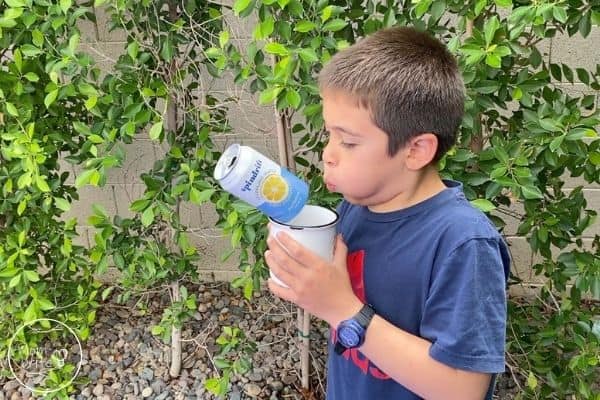
Air pressure is what makes our bike tires run on the road, keeps planes in the air, and is responsible for weather patterns. But how does it work?
This hands-on activity will explore Bernoulli’s principle, which states that as a fluid moves faster, it produces less pressure. On the other hand, slower-moving fluids process greater pressure.
Kids of all ages will be amazed by this air pressure experiment. The best part is that you only need a beverage can and one or two mugs!
This simple science experiment is typically done with soda cans just because soda is a beloved drink that people have around the house. But you can do this with any beverage can. We are a fan of sparkling water, so that’s what we used for our experiment.
Jumping Beverage Can Experiment
Materials:
- 1 empty beverage can
- 1-2 mugs
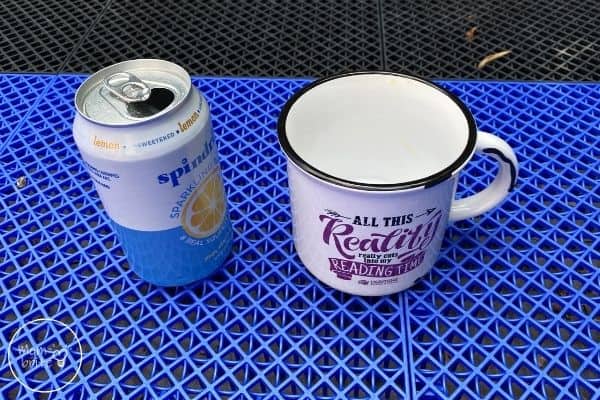
Instructions:
1. Place the empty beverage can inside a mug.
- Make sure the can is empty to ensure that you don’t end up with a mess on your hands!
- The mug should be wide enough so that there is a little gap between the mug and the beverage can.
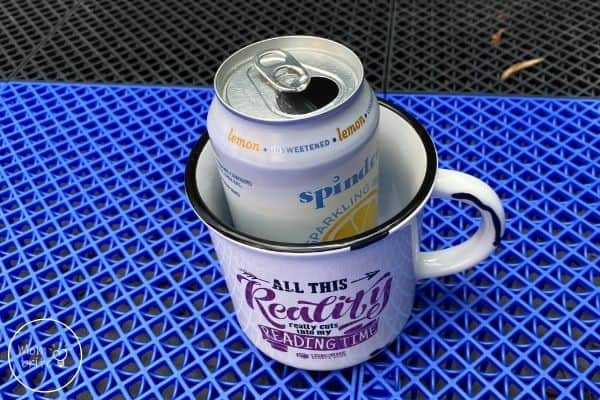
2. Challenge your kid to remove the empty beverage can from the mug.
The rule is that you can’t touch the can or turn the mug upside down. They also can’t use another element like flooding the mug with water to get the can out.
If your kids are like mine, they will try blowing really hard directly at the can. The soda can might move or tilt slightly, but it will not have the upward force to jump out of the mug.
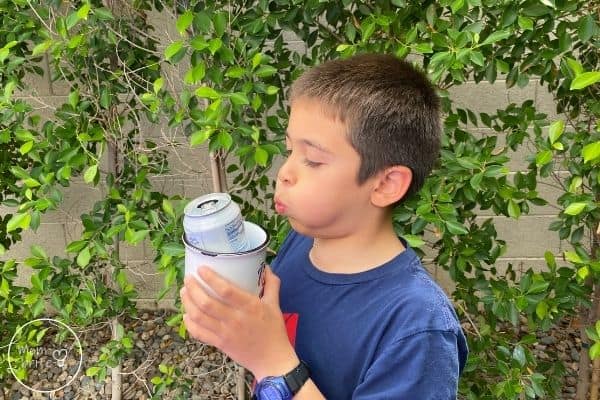
3. Blow down into the gap between the can and the mug.
Blow slightly from the side, or else the can might fly up and hit you in the nose. My kids learned that the hard way!
It takes a few tries to learn exactly how much force is necessary to get the can out of the mug. If your kid is too excited and wants to keep blowing, make sure he or she takes a break to catch his or her breath.
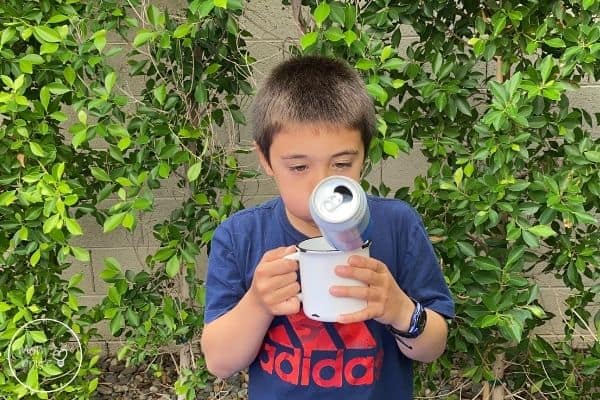
4. Blow the beverage can from one mug to another.
After your kids mastered blowing the soda can out of one mug, challenge them to move it from one mug to another without touching the can.
Pick two mugs that are very similar in size. Place the can in one mug.
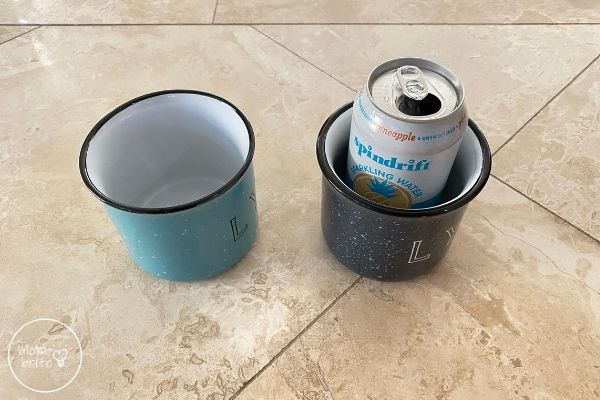
Now your kid not only has to make the can jump out of the mug but also has to aim the can in the right direction so it lands in the other mug.
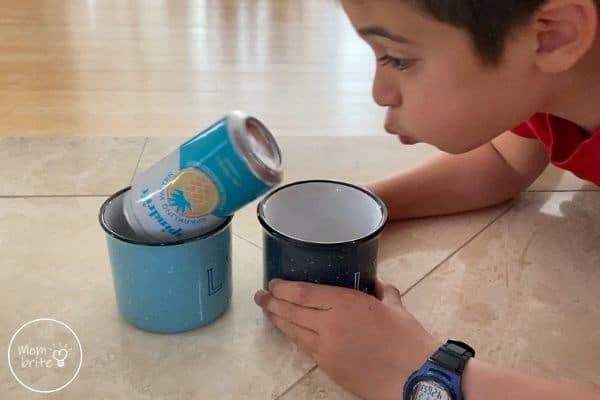
5. Move the mugs farther apart for more of a challenge!
The farther apart the mugs are, the harder it is to jump the can from one mug to the other.
After lots of tries (I lost count of how many times we repeated this experiment), we discovered that:
- The closer the two mugs are, the easier it is to jump the can into the other mug.
- The can can land right side up or upside down.
- If the distance between the two mugs are longer than the height of the can, it is very difficult to get the can to land in the other mug. You would have to make the can jump high above the mug and hope it somehow descends right into the other mug.
Science Behind the Jumping Beverage Can Experiment
Your child might have figured out that they need to blow downward instead of directly at the can to get the can to jump out of the mug. This is a good opportunity to teach them about the science of air pressure.
Bernoulli’s principle states that as the speed of a fluid increases, the pressure of the fluid decreases. Since air flows and takes the form of its container, it is fluid.
When you blow into the gap between the beverage can and the mug, the air pressure around the can decreases. The harder that you blow, the lower the pressure is outside the can.
Meanwhile, the air pressure under the can stays the same. As you continue to blow, the air pressure under the can becomes much higher than the air pressure around the can. The high-pressure air pushes against the bottom of the mug and accelerates the can out of the mug.
Final Thoughts on the Jumping Soda Can Experiment
I hope you and your kid had lots of fun with this jumping soda can experiment. Ever since we did the experiment the first time, my kids would randomly repeat the experiment themselves whenever they need something to do.
If you have multiple kids, they will have fun competing to see who can jump the can from one mug to the other first. It’s so exciting whenever the can lands in the mug, especially when the mugs are far apart.
Who needs expensive toys when all you need is a can, a couple of mugs, and science?
Related Posts:
